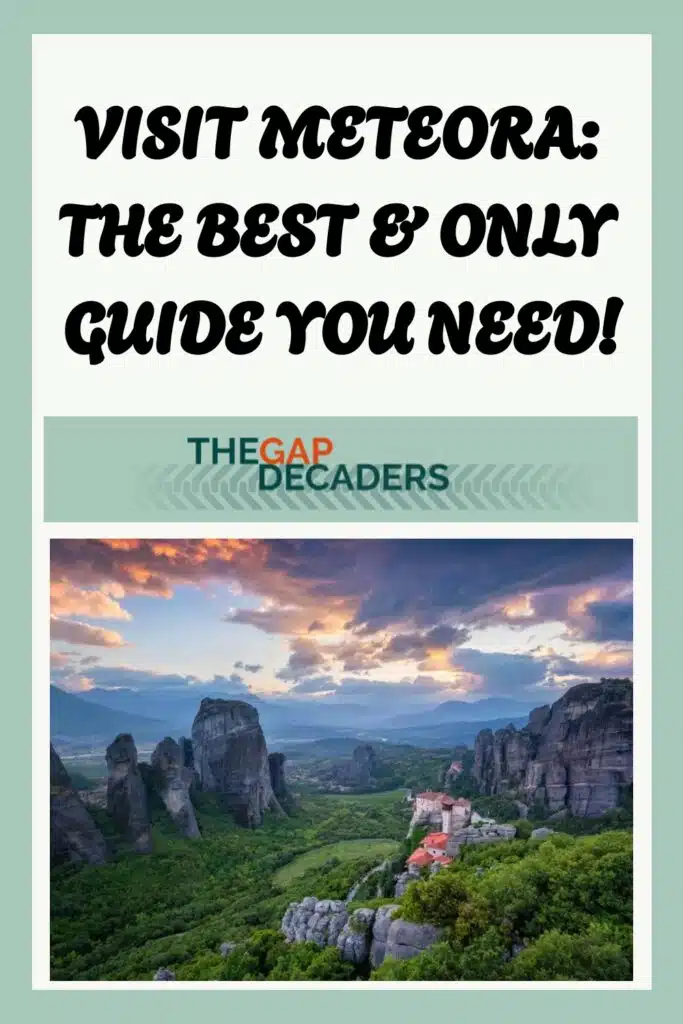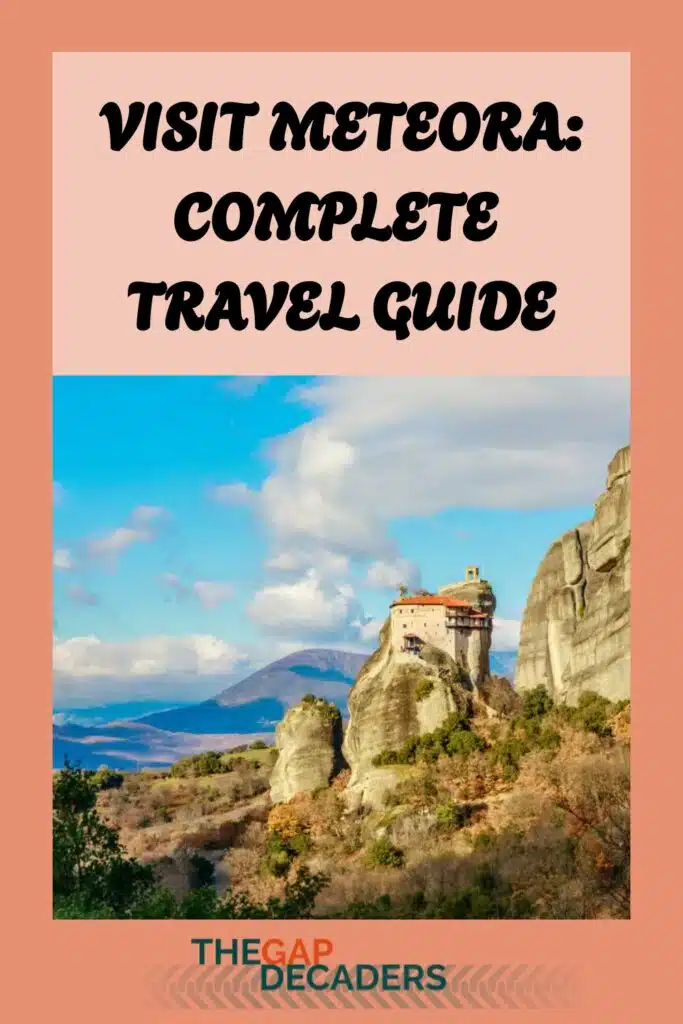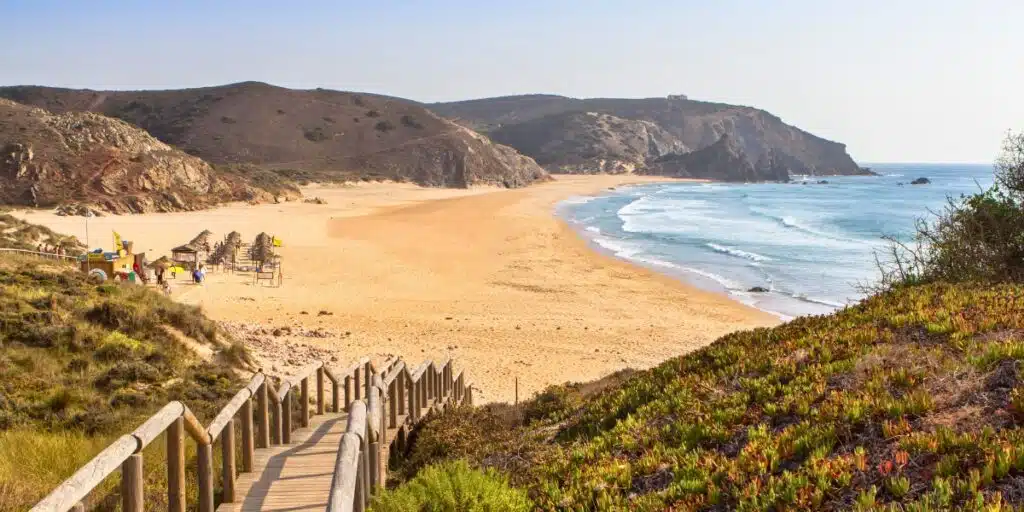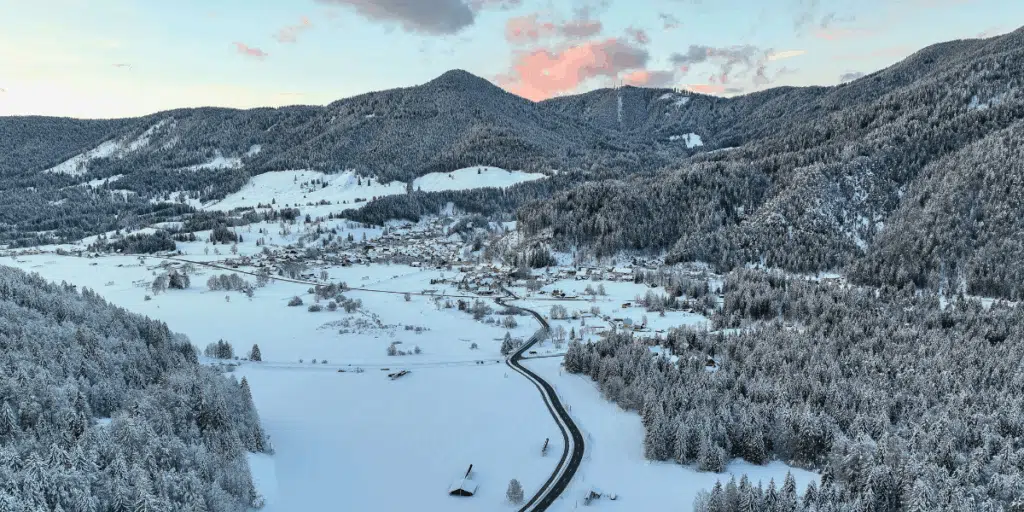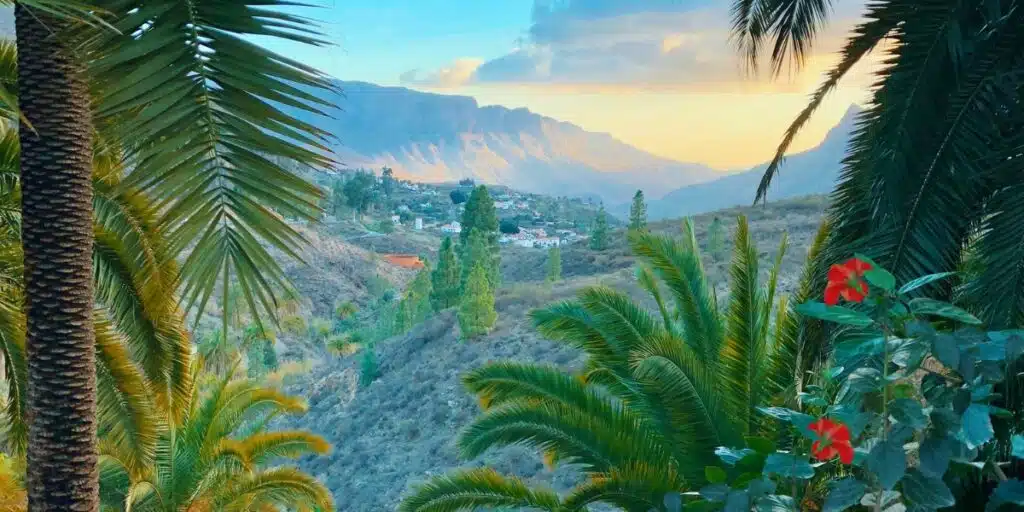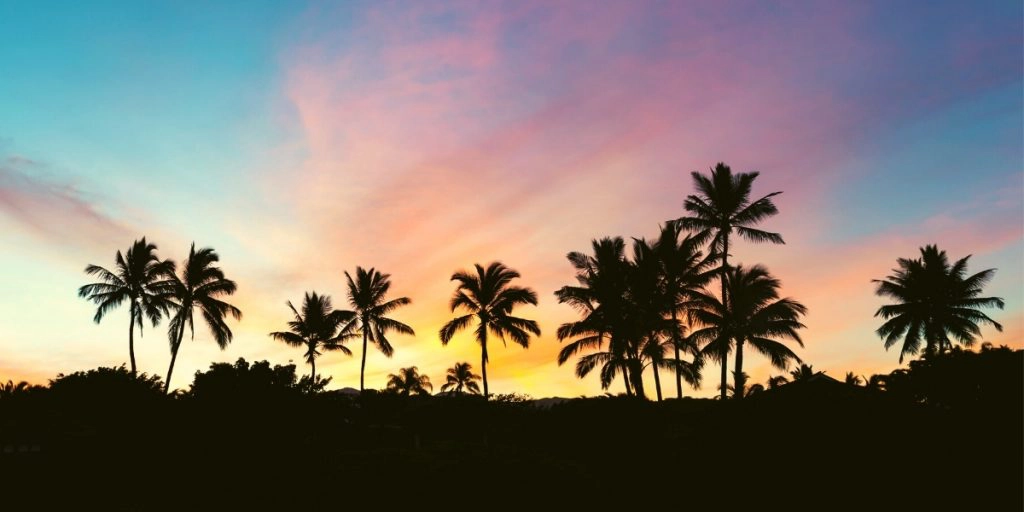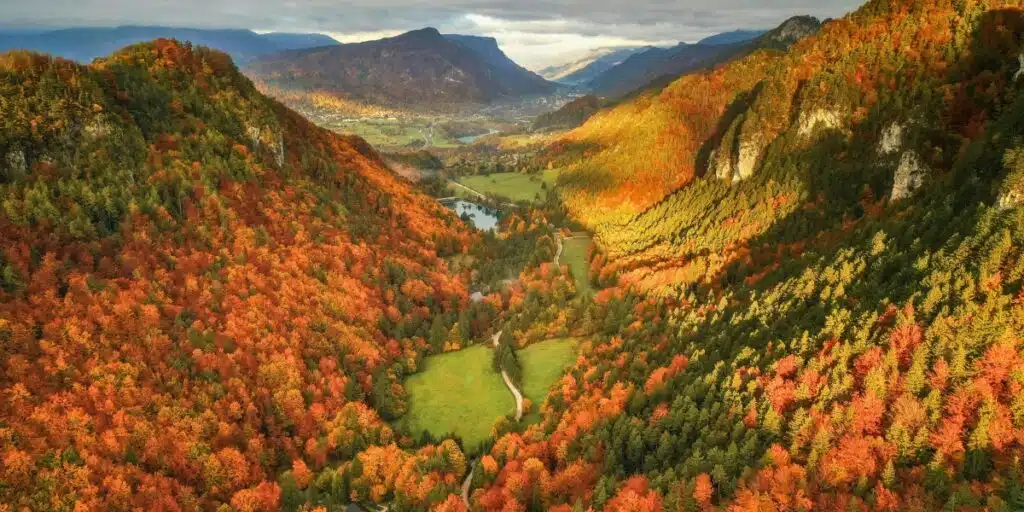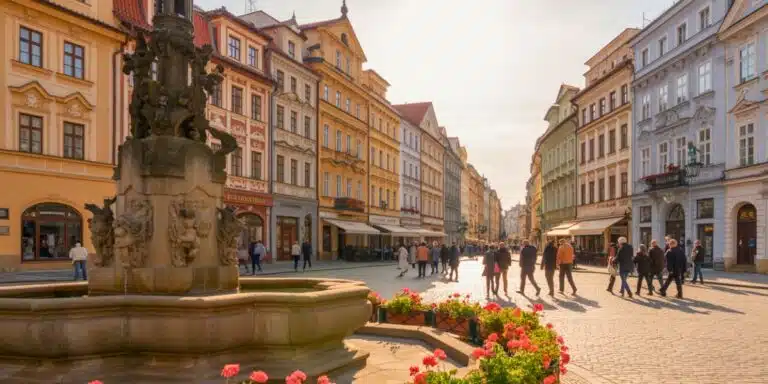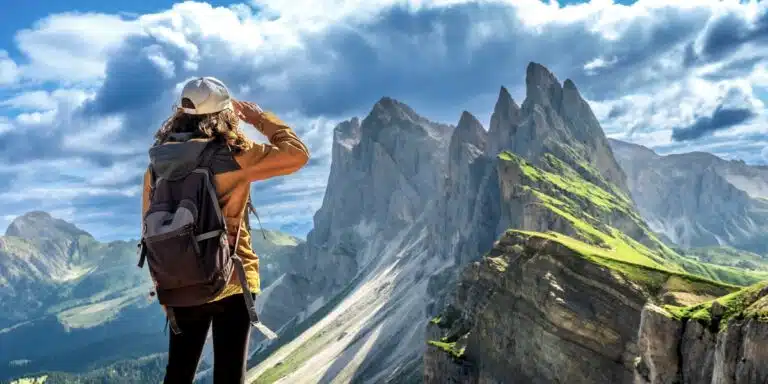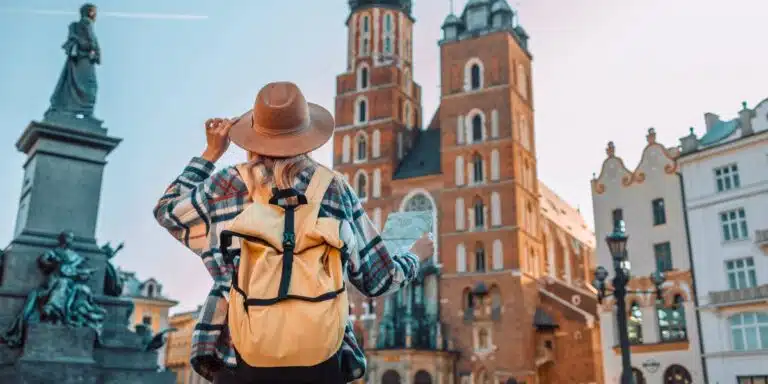This post may contain affiliate links, from which we earn an income. Click here to read our affiliate policy.
Meteora lies in north-western Greece on the mainland. This ancient region of towering monoliths hosts one of the largest complexes of Eastern Orthodox monasteries, second only in importance only to Mount Athos.
The beautiful UNESCO monasteries are marvels of construction. They were built into the sandstone cliffs in the 14th and 15th centuries with materials hauled by hand or rudimentary pulley systems. The most famous among them is the Great Meteoron, known for its extensive library and captivating frescoes.
Once home to 24 monasteries and hermitages, only six remain active and open to visitors today. Whether you choose to visit one or all of them, each offers a unique glimpse into Meteora’s spiritual and architectural wonders. Discover more about each monastery in our Meteora travel guide and our top tips for making the most of your visit here.
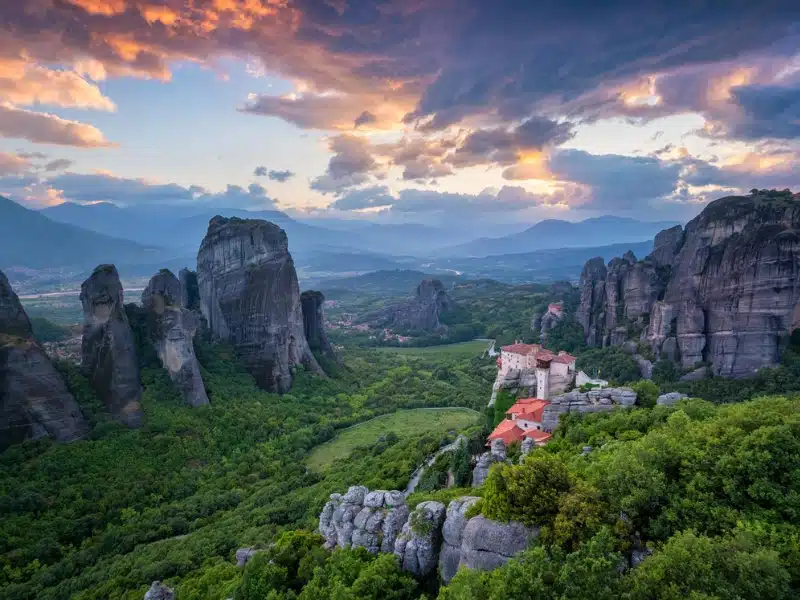
Getting to Meteora
Self-Drive
Meteora is located in the Greek region of Thessaly. It’s not the most convenient spot, but it is easily accessible if you’re taking a Greek road trip.
Head for Kalabaka, the nearest village to the monasteries, which sit high on the region’s rocks. Above the village is the Meteora massif, with a road skirting the rim. The monasteries are perched on rocky outcrops of this massif.
The complete driving loop of the monasteries from Kalabaka (sometimes called Kalampaka) to Kastraki and then back again is 20km. If you start early, you should be able to see them all in a day, but we think it’s better to do it across two days so you don’t feel rushed and have time to stop along the way.
Stay at the Monastiri Guesthouse in Kastraki. At the base of the majestic rock formations, this charming hotel combines warm hospitality and rustic charm with modern comforts and stunning views. We prefer to stay in Kastraki over Kalabaka – it’s quieter and easier to park and drive (and if you’ve never driven in Greece, you’ll be grateful for that!).
Day Trips from Athens or Thessaloniki
It’s a long and full day trip from Thessaloniki Athens to Meteora, but if you want to visit this iconic site without driving, then it’s worth the effort to take a day out of your Thessaloniki or Athens itinerary. These are our top Meteora day trip recommendations:
By Train
There are two direct trains daily from Athens to Meteora, and you can book the tickets yourself and plan a DIY tour of Meteora by taxi at the other end.
You’ll need to book train tickets from Larissa train station in Athens to Kalambaka. The express train leaves Athens at 7.20am and arrives at Kalambaka at 11.31am. The return train departs Kalambaka train station at 17.15pm and arrives in Athens 21.25pm.
Once in Kalambaka, you have several options to see the monasteries:
Hire a Bike
There are a number of spots in town, close to the railway station, where you can hire an electric bike. These bikes are powerful enough to tackle the hills and get you around the complete loop in four or so hours. It’s a really fun way of seeing this amazing part of Greece.
Take a Bike Tour
These Meteora electric bike tours include an e-bike and an English-speaking tour guide, who will take you to the best spots for photographs and views. As you cycle between the monasteries, you’ll also learn about the history of them.
Grab a Taxi
There are always cabs at the station, and you can book one to visit the whole loop – you’ll need 3-4 hours. If you get lucky, your driver will also share some information with you and take you to the best lookout points where you can stop and take pictures.
Take a Meteora Tour
This small group Meteora sightseeing and monasteries tour can start in Kastraki or Kalabaka and will take you to the six monasteries with a knowledgeable local guide.
Make sure you have travel insurance you can trust when visiting Greece. We recommend True Traveller for their 5-star TrustPilot reviews, variety of cover options, best activities cover as standard, great prices, and excellent service.
Meteora Monasteries
The Monastery of Great Meteoron
This is the oldest and largest of all the monasteries of Meteora. Great Meteoron monastery serves as the main museum for visitors to Meteora and holds a copy of the Suda, a 10th century Byzantine encyclopedia of the ancient Mediterranean world.
Saint Athanasios, the Meteorite, founded The Great Meteoron shortly before the middle of the 14th century. The nave, narthex and katholicon of the Monastery’s main temple date back to that time. Later on a refectory, a kitchen, a hospital-home for the aged, a tower, and small chapels were added.
Don’t miss the chance to visit the museum of the monastery, where historical codices and religious icons of high value are on display.
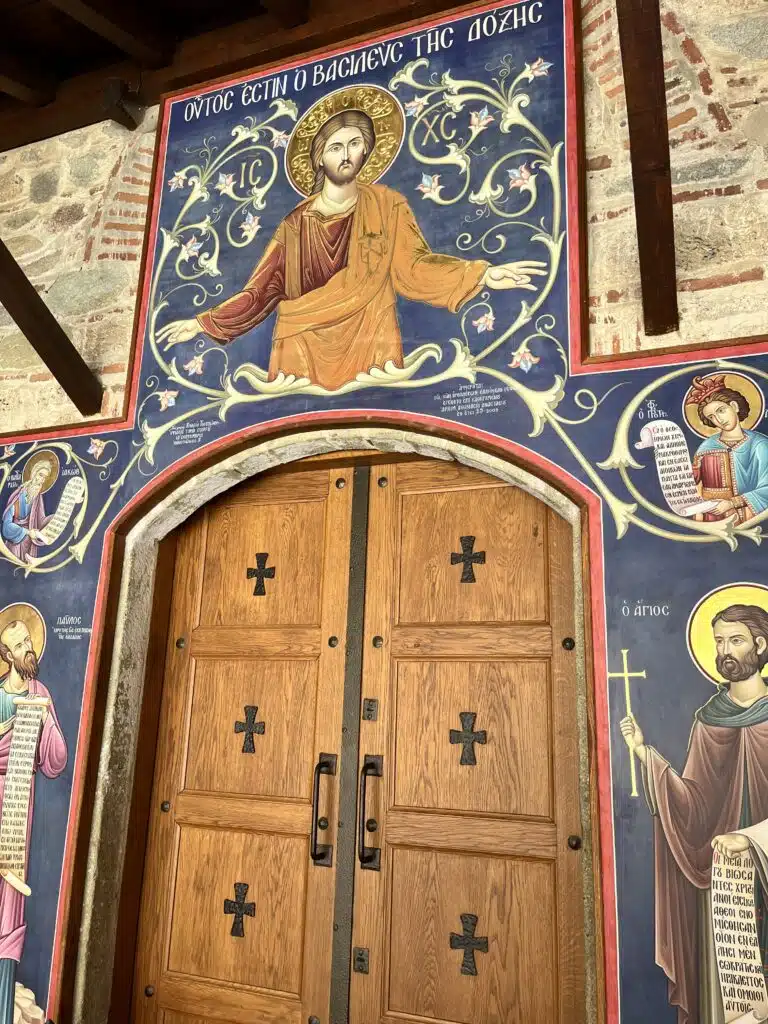
The Holy Monastery of Varlaam
The Holy Monastery of Varlaam is the second-biggest monastery of Meteora and is located close to the Great Meteoron Monastery. It was founded in the mid-14th century by a monk named Varlaam.
The main monastery can be accessed through the main road after climbing 195 steps carved into the rock. The Monastery of Varlaam hosts a museum in the old refectory and is known for its great frescoes.
The monastery has preserved the tower with the old pully system where you can see the net, which was used by the first monks to haul up people and provisions.
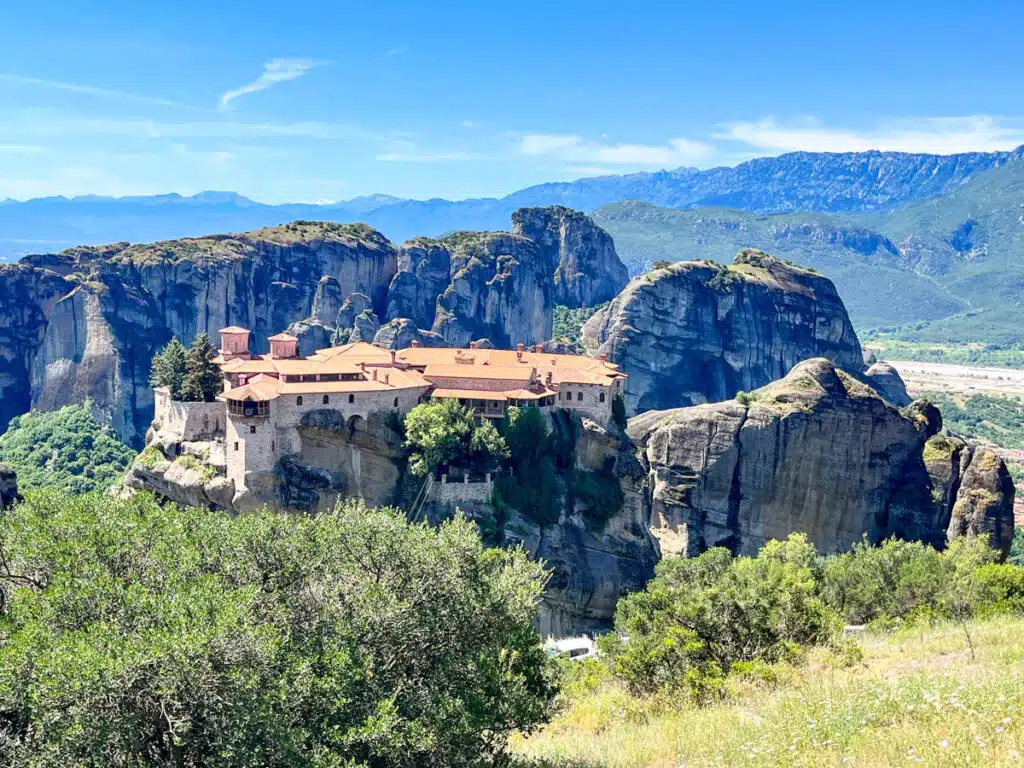
Looking for the best SIM card deals in Europe for your trip? Check out our guide to the best data SIMs in Europe and get the best deal for your trip to Greece.
Monastery of Holy Trinity
Holy Trinity is situated at the top of a rocky precipice over 400 metres high and is one of the most photographed monuments of Meteora. At the same time, it ranks among the most difficult ones to reach in terms of its access.
This monastery was made famous by being filmed for the James Bond movie For Your Eyes Only.
Left of the monastery’s entrance is the chapel of St. John the Baptist, a small rotunda carved into the rock. The highest point is northwest of the monastery’s building complex. You can enjoy a rare view of the other monasteries and the Meteora rocks from the balcony.
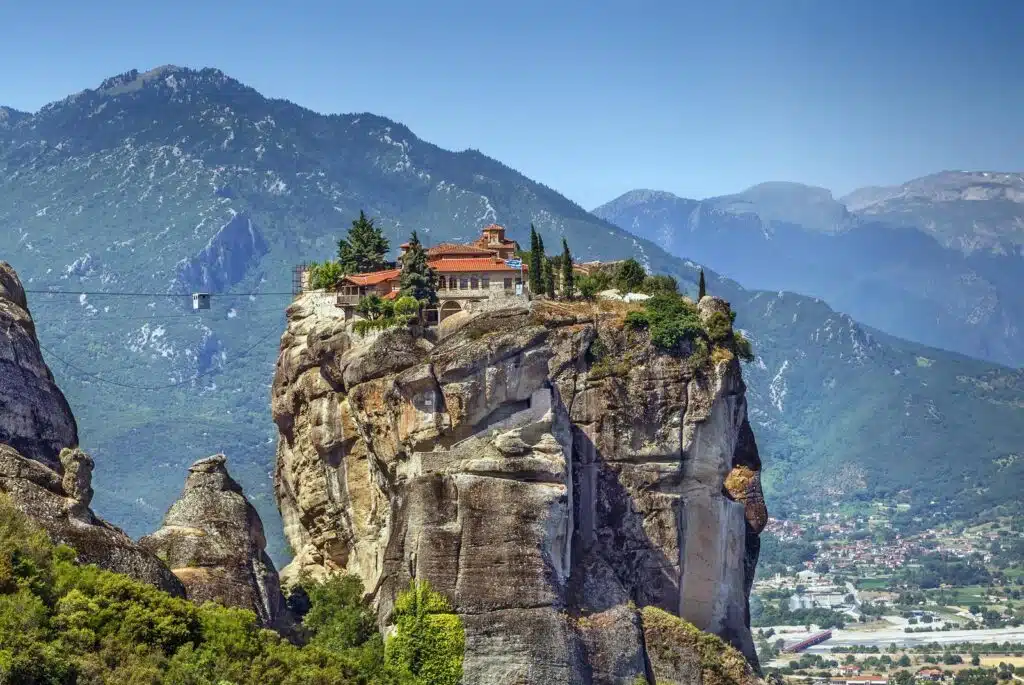
St Stephens Monastery
The rock monastery St. Stephen was first inhabited by monks in the late 12th century and is now a nunnery. Located on the southern edge of the cluster of Meteora, just above Kalabaka, access to the monastery is very easy, with a small stone bridge connecting the modern road at the entrance.
Visit this monastery for spectacular views of the vast valley of Thessaly, the Pinios River, and the Pindos mountain range across the plain.
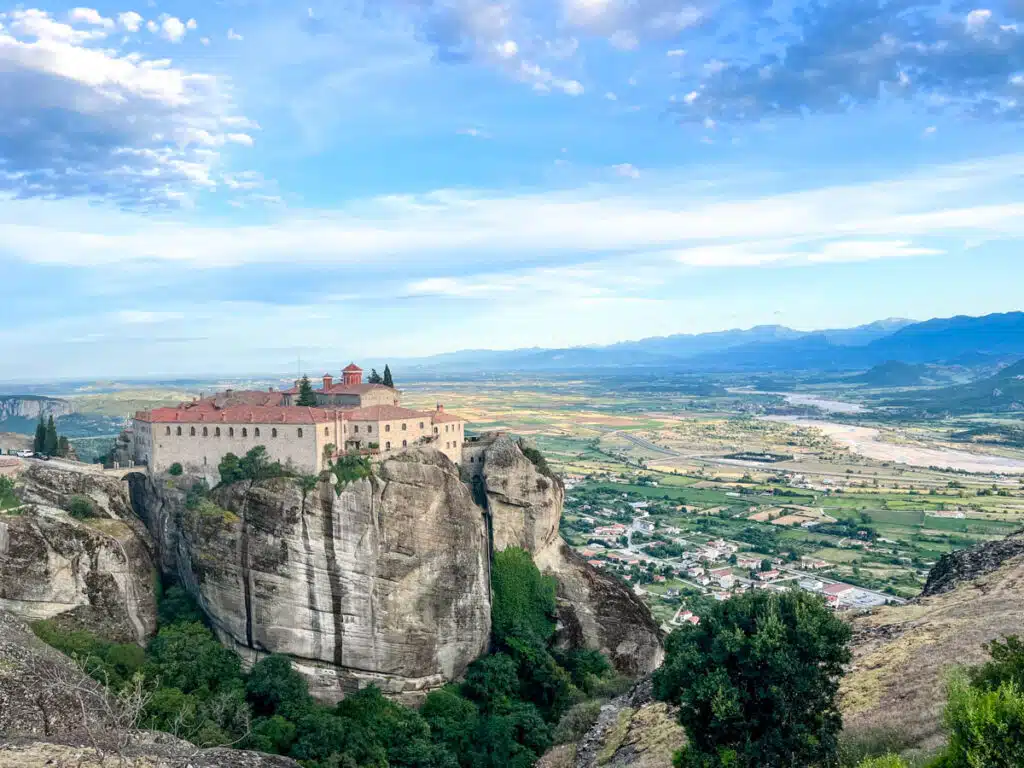
Saint Nicholas Anapafsas Monastery
The Holy Monastery of Saint Nicholas of Anapafsas is the first monastery you encounter on your way to the Holy Meteora. It is only a short walk from Kastraki village.
The Monastery of St. Nicholas Anapafsas was founded at the end of the 14th century. The limited surface area of the rock forced the monastery to be built vertically on floors, one level on top of the other.
The frescoes decorating the monastery’s little church are considered among the most important sets of post-Byzantine painting in Europe.
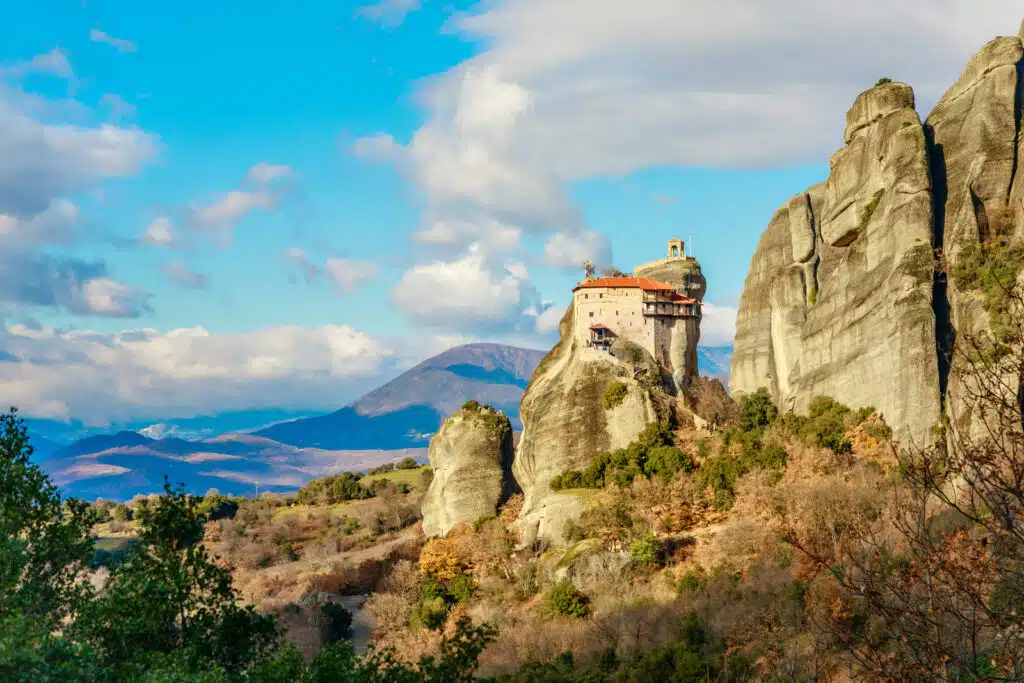
Roussanou Monastery
A 16th century monastery dedicated to St. Barbara, Roussanou is located on the way from Kastraki to Meteora between St. Nicholas Anapafsas and Varlaam monastery. The ascent to the monastery was originally a ladder, but fear not – access is now across two solid bridges built in 1930.
The monastery is home to a small community of nuns and consists of a three-storey building. On the ground level is the Church of the Transfiguration of Christ with several cells. The second and third levels are occupied with reception halls and an exhibition room.
Compared to other rocks where monasteries were built, the one of Roussanou has a lower elevation, which makes it more accessible. It can also be reached from above and below due to its position along the road.
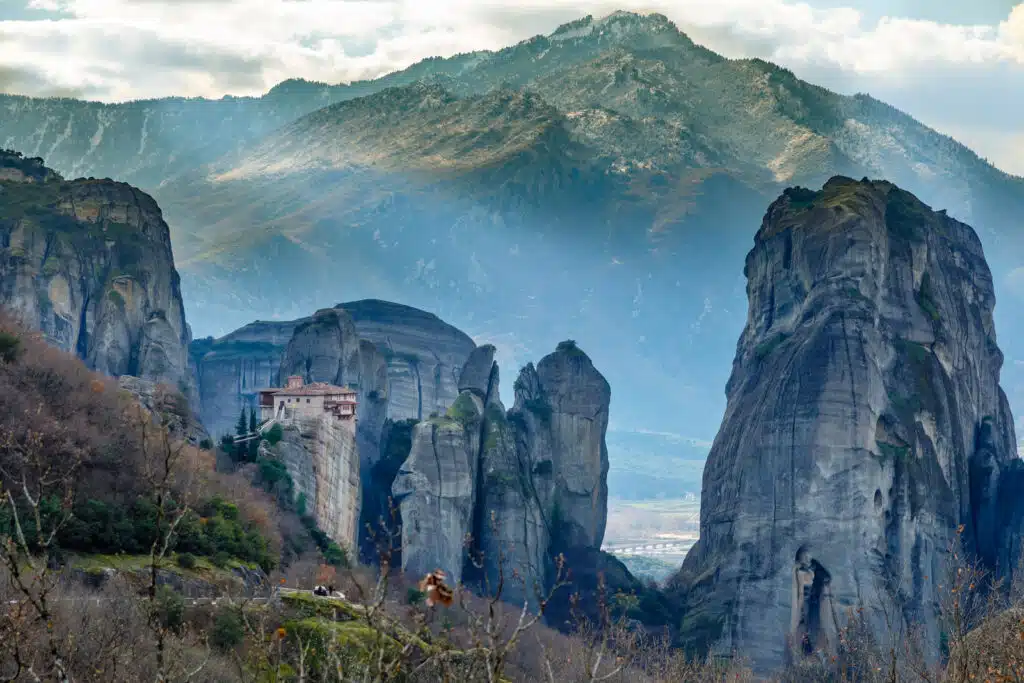
Meteora Travel Tips
Other Greek Travel Ideas
Things to Do Around Meteora
The region around Meteora is truly beautiful, with deep river gorges, dramatic mountains and forests covering the landscape.
If you plan on staying in the area for a few days, there is lots to explore:
Hiking
The landscape surrounding Meteora is crisscrossed with trails that wind through lush forests, past dramatic cliffs, and alongside serene rivers. Hikers can enjoy breathtaking views of the rock pillars and the valleys below and visit hermit caves, with trails suitable for all fitness and experience levels.
One of the most popular routes is the Great Saint, the highest peak of Meteora. The Great Saint via Ferrata hiking and scrambling route rises some 430 meters above the town of Kalambaka, following a hidden trail through rock pillars, cracks and crevices that requires a guide and specialist equipment.
Rock Climbing
Adventure seekers can indulge in rock climbing, an activity that has gained popularity due to the unique geological formations of Meteora. The towering rocks provide a variety of climbing routes, from beginner to advanced levels, making it a thrilling experience for climbers of all skill sets.
This rock climbing experience can be tailored for all levels, and your qualified instructor will take you to some of the best spots.
History & Culture
The charming town of Kalambaka offers a glimpse into traditional Greek life. You’ll find quaint shops selling local crafts and products, cosy cafés, and a variety of traditional Greek taverns where you can try the regional cuisine, including delicious homemade pies and honey made by the the local monks.
Truffle Hunting
The woods below Meteora on the fringes of Pindos mountains are the perfect environment for truffles to grow, and hunting them here has been a local pastime for centuries.
Take a walk with a truffle hunter and his dogs, and then eat your finds at a pasta cook-out before visiting the Meteora Museum of National History and Mushrooms.
Looking for more European travel inspiration? Check out these top posts…
16 of the Best Travel Destinations in January
Our 60 Before 60 Travel Bucket List
The 16 Best Second Cities in Europe You Shouldn’t Miss
Adventure Travel Bucket List: 15 Epic Experiences in Europe
Travel Trends 2026: The Year of Mindful Escapes and Meaningful Journeys
The Ultimate Europe Travel Bucket List: 15 Classic Experiences to Inspire Your Next Trip
Love it? Pin it!
